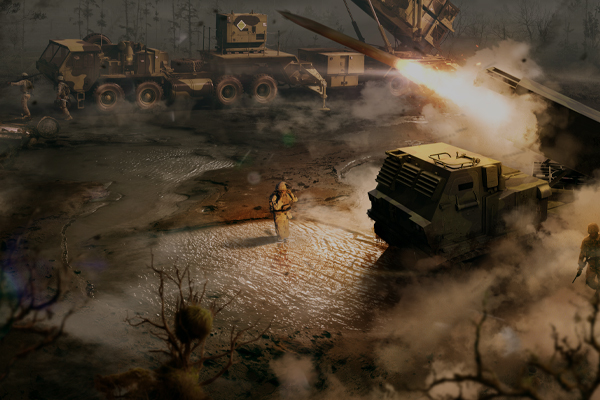We expected a counterattack, but not this fast: not even 5 days after the end of Operation Scoilt, the British have mustered enough troops for a pincer attack on our positions. We have detected two veteran Corps attacking from Varna and the entire 13th Army coming from the east to crush our positions in what has been called simply The Bulge. The Commonwealth Air Force has shown up with overwhelming numbers, while our own Wings are still awaiting their replacements.
The Yugoslavian Armija will hold the western flank, while our troops will deal with the eastern one. Our troops didn’t have enough time to replenish their strength, nor were we able to establish a supply chain adequate to sustain both armies. The enemy will surely field plenty of tanks and their famed Ironsides to crush us; we can cede ground at first, but at the end of the battle Chernomorets must still be in our hands to ensure the railway stays closed.

30/8/1943
Both us and the Yugoslavians think the British onslaught is severe enough to warrant blowing up all the bridges over the rivers guarding our flanks. We have to cling to every possible advantage, and forcing the enemy to ford a river instead of rolling through concrete bridges is a good one. The supplies captured at Dospat during Operation Scoilt are also used to prop up our reserves.
As expected, the British advance to the riverline and then are forced to stop and prepare for a contested crossing. One of their Medium Guns Regiments comes too close to our positions around Glabrovo and is first targeted by our own heavy guns and then attacked by elements of the 105th Coisithe Division in a daring amphibious raid. The British are forced to leave behind the charred remains of dozens of howitzers and retreat.
At Chernomorets, British Bombers target our positions, saturating them with high explosive, but the massed AA and the intervention of our Eitleog Wings wipe out an entire Bomber Wing.
I decide to keep 6th and 4th Mhotaraithe Divisions in the reserve, between Gabrovo and Chernomorets. The 16th Meichnithe and 40th Armurtha Divisions advance closer to Chernomoret’s AA umbrella.
I give priority to rebuilding my mechanized and armored units to full strength.


31/8/1943
Gabrovo falls after a heavy artillery barrage and a direct assault by the British 101st Motorized Division supported by the heavy tanks of the 77th Armored Division. A Regiment from the veteran 100th Coisithe Division shores up the defenses outside the town. The 3rd Mhotaraithe Division advances to the riverline relieving other Coisithe regiments and strikes hard against several British bridgeheads northwest of the town.
Enemy Fighters hunt down our Interceptors and the Yugoslavian planes, but our 6th Eitleog Wing downs another weakened Bomber Wing over Chernomorets. There, heavy enemy shelling and repeated assaults force one of 15th Meichnithe Division’s regiments to the rearguard. Two of the 40th Armurtha Division’s tank regiments advance and help the 106th Coisithe Division to inflict heavy losses on two enemy infantry regiments trying to cross the river over the old highway bridge’s ruins.
The Yugoslavians are under heavy attack west of Dospat and Senovo, where a British Ironsides Brigade is fording the river; the Yugoslavian commander doesn’t like the idea of the British assault troops crossing unopposed, so it sends the 11th Tenkovske Division to attack the bridgehead. The assault is supported by an Artiljerija Regiment and absolutely pummels the Ironsides, inflicting crippling casualties: the Yugoslavian tanks have an easy time targeting the slow R-42 “Baron” assault guns as they ford the river, and they overwhelm the thick armor by either aiming for weak spots or just hitting it enough times to create one. The IX Pesadija Korpus guards a wide bend in the river, in front of which several British Motorized Divisions are passing. They are apparently headed northeast toward Senovo, but it’s too early to abandon the defensive positions and leave this sector wide open.


1/9/1943
The British pressure against Chernomorets is growing, but II Còr is beating back every assault so far, exacting a heavy toll on any enemy unit that tries to cross the river.
I Còr is in a worse shape, due to its limited armored support: its Heavy Artillery Regiment helps a lot, but the sheer mass of enemy infantry and the presence of the British 77th Armored Division are already threatening to overwhelm the defense. The veteran 3rd Mhotaraithe is fully committed to defend the riverline, and the 100th Coisithe has spotted an armored regiment fording the river southeast of Gabrovo. If the enemy heavy tanks reach the open terrain, it can spell doom for the entire formation. It may be safer to pull out of the riverline entirely to avoid a flanking maneuver.
Additionally, the threat of the enemy armor is severe enough to warrant pulling the 40th Armurtha Division out of Chernomorets and replacing it with 4th or 6th Mhotaraithe. This will weaken our lines in the key southern sector, but I have little choice.
The British Fighters swarm over Chernomorets and decimate the 6th Eitleog Wing, forcing it to retreat to our airfields.
Yugoslavian Engineering Battalions start mining the riverline sectors that can’t be guarded by their units. Further armored assaults against the British Ironsides leave the enemy Brigade in tatters, barely functional anymore. The fording site is littered with no less than a hundred assault guns and other vehicles, while the corpses of the British assault troops are washed downstream by the currents. In the south, however, the enemy have managed to establish numerous beachheads preventing the Yugoslavian IV Konjica Korpus from concentrating its fire against each one separately. A series of mechanized and armored assaults finally dislodge the defenders from the river banks, and the frontline is breached.



















